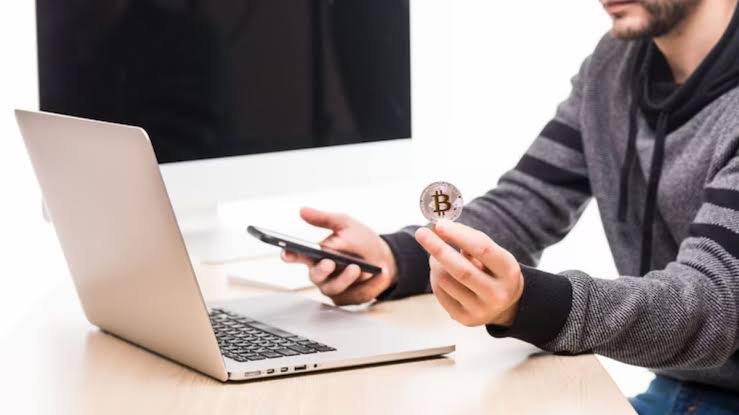Crypto
USDTCCK: What You Need to Know About This Emerging Digital

Introduction to USDTCCK
In the world of cryptocurrencies, there are always new developments and innovations that can leave both seasoned and new investors scratching their heads. One such innovation that has recently caught attention is USDTCCK. If you’re wondering what USDTCCK is, why it matters, and how it could impact the crypto space, you’ve come to the right place! In this blog post, we’ll break down everything you need to know in simple terms.
What is USDTCCK?
USDTCCK is a relatively new term in the world of cryptocurrency. While many people are familiar with USDT (Tether), which is a stablecoin pegged to the value of the US Dollar, USDTCCK takes things a bit further. But what exactly does this term mean, and why should you care?
In short, USDTCCK is an abbreviation that refers to a specific type of digital asset that combines the stability of USDT with additional features aimed at improving the overall transaction process. The addition of “CCK” stands for a particular version or protocol of Tether that adds more security and features compared to the original.
Let’s dive deeper to understand what makes USDTCCK different.
Key Features of USDTCCK
- Stability Like USDT
- USDTCCK is still a stablecoin, meaning it’s designed to maintain a stable value (often 1:1 with the US Dollar). This makes it a reliable option for those who want to avoid the volatility seen in other cryptocurrencies like Bitcoin or Ethereum.
- Enhanced Security
- One of the main selling points of USDTCCK is its improved security features. It uses advanced blockchain technology and encryption methods to make transactions safer, which is particularly important in the often unpredictable world of crypto.
- Faster Transactions
- With USDTCCK, transactions are processed more quickly than with traditional USDT. This can be crucial for users looking to move funds quickly without waiting for long confirmations.
- Integration with New Platforms
- USDTCCK is compatible with a growing number of crypto exchanges, wallets, and platforms, making it an increasingly popular option for crypto traders and investors.
Why Should You Care About USDTCCK?
You might be thinking, “Why should I be interested in USDTCCK when there are already so many other cryptocurrencies and stablecoins out there?” Good question! Here are some reasons why USDTCCK could be worth your attention:
- Security and Trust: As a stablecoin built on a secure blockchain, USDTCCK offers peace of mind for anyone who is cautious about the security risks that come with crypto trading.
- Faster and Cheaper: By improving transaction speeds and reducing fees, USDTCCK can help you save time and money, especially if you’re an active trader.
- Potential for Growth: As more platforms adopt USDTCCK, its value and influence in the market could continue to grow. Getting in early could be a smart move if you’re interested in the long-term potential.
How to Use USDTCCK?
Using USDTCCK is easy, and its setup is similar to other stablecoins. Here’s a simple guide on how to get started:
- Create a Wallet: To store USDTCCK, you need a compatible crypto wallet. There are many options out there, from mobile wallets to desktop wallets. Just make sure it supports USDTCCK.
- Buy USDTCCK: You can purchase USDTCCK from most major crypto exchanges. Simply trade your fiat currency or another cryptocurrency for USDTCCK.
- Use for Transactions: Once you have USDTCCK, you can use it for transactions. Whether you’re transferring funds, making payments, or trading on different platforms, USDTCCK offers a fast and secure way to do so.
Is USDTCCK the Future of Stablecoins?
While USDTCCK is still relatively new, its combination of stability, security, and efficiency makes it a promising option in the world of stablecoins. Many believe that stablecoins like USDTCCK could play a bigger role in the future of decentralized finance (DeFi) and cryptocurrency transactions. However, as with any new technology, only time will tell if it can truly compete with established players like USDT or USDC.
Conclusion
In summary, USDTCCK offers a unique combination of features that make it an exciting player in the world of cryptocurrencies. It provides the stability of traditional stablecoins like USDT but with added security, faster transaction speeds, and lower fees. Whether you’re an investor, a crypto enthusiast, or just someone curious about the world of stablecoins, it’s worth keeping an eye on USDTCCK as it continues to grow.
FAQs About USDTCCK
1. What is the difference between USDTCCK and regular USDT?
- USDTCCK is a more secure and faster version of USDT, offering enhanced features such as quicker transactions and lower fees.
2. How can I buy USDTCCK?
- USDTCCK can be purchased on many major cryptocurrency exchanges by trading your fiat or crypto for USDTCCK.
3. Is USDTCCK safe to use?
- Yes, USDTCCK is designed with high-security features and operates on a secure blockchain to protect your funds.
4. Can I use USDTCCK for everyday transactions?
- Absolutely! USDTCCK can be used for a variety of transactions, from paying for goods and services to transferring funds.
5. What are the benefits of using USDTCCK for trading?
- USDTCCK offers fast transaction speeds, lower fees, and enhanced security, making it an excellent choice for traders looking to save time and money.
Crypto
Contact robthecoins: Your Ultimate Guide to Seamless Support

Contact robthecoins
If you need to contact robthecoins, you’ve come to the right place. Whether you require support, have questions, or wish to collaborate, this guide explains everything. It focuses on providing clear, easy-to-follow steps so that you can connect fast and effectively.
Why Reach Out to robthecoins?
People often need to contact robthecoins for various reasons:
- To report issues or bugs
- For partnership or sponsorship inquiries
- To ask about upcoming content
- To provide feedback or suggestions
By reaching out directly, you ensure your message goes where it matters and gets timely attention.
Understanding the Support Landscape
To make the process smooth, it’s helpful to understand the typical support structure:
- Support teams may have queue systems
- Response times can vary depending on volume
- Certain methods (like email) tend to be faster
Hence, choosing the right channel matters.
Primary Methods to Contact robthecoins
1. Email Support
Email is often the most reliable way to connect. Use support@robthecoins.com (or another official email) and include:
- Your full name and username
- The issue or inquiry in the subject line
- A clear description in the body
Emails help maintain traceability and prioritize messages systematically.
2. Social Media Channels
robthecoins stays active on platforms like:
- Twitter: @robthecoins_support
- Instagram: @robthecoins_official
- Facebook: RobTheCoins
Use direct messages (DMs) to ask questions or seek assistance. While responses may take longer than email, social media offers real-time interaction and visibility.
3. Contact Form on the Website
Visit the Contact Us page on robthecoins.com. Fill out fields: Name, Email, Subject, and Message. Attach screenshots if needed. Then click “Submit.” You’ll typically receive an auto-reply and a ticket number for follow-up.
How to Prepare Before You Contact robthecoins
A. Gather Necessary Information
Before reaching out, collect:
- Order or transaction ID (if applicable)
- Screenshots of errors or issues
- Relevant links or timestamps
This reduces back-and-forth and accelerates resolution.
B. Be Clear and Concise
Explain your issue in plain language. Use bullet points, numbered steps, or headings in your message. Avoid unnecessary details—stick to what matters most. This keeps your inquiry efficient and professional.
What to Expect After You Initiate Contact
After you send your message, expect:
- Automated acknowledgment: You’ll receive it instantly.
- Ticket creation: A unique reference number for your case.
- Follow-up communications: Via the channel you used, with status updates or solution requests.
Typically, replies arrive within 24–72 hours, though busy periods can stretch this.
Tips for Getting a Swift Response
- Use email for urgent or complex issues
- Include “Urgent” in the subject for time-sensitive matters
- Be respectful and patient (support staff appreciate it!)
- Follow up after 48 hours if no response appears
These actions often result in faster, more helpful replies.
Common Issues and How to Solve Them
| Problem | Solution |
|---|---|
| No reply after email | Check spam folder; follow up with ticket number included |
| Website form not submitting | Try a different browser or clear cache, then submit again |
| Social media messages ignored | Switch to email or note the lack and resend with more info |
| Billing or payment errors | Include screenshots, transaction ID, and card details in your email |
Proactive steps can often resolve issues before they escalate.
Alternatives If You Can’t Reach robthecoins
- Community forums or FAQs: Many answers may already be published online.
- Reddit or Discord communities: Other users often share quick solutions.
- Industry blogs or video tutorials: Content creators might cover similar issues.
These alternatives can support you until the official team responds.
Frequently Asked Questions
Q1: How long will it take to get a reply when I contact robthecoins?
A: Expect 24–72 hours via email or contact form. Messages sent on weekends may take longer.
Q2: Can I escalate an urgent issue?
A: Yes—add “Urgent” to your subject line and mention deadlines.
Q3: What if my emails bounce?
A: Double-check the email address. Try again or send via contact form as an alternate route.
Q4: Does robthecoins offer phone support?
A: Currently, no. They handle support via email, forms, and social media only.
Q5: Can I track the status of my request?
A: Use the ticket number in all follow-ups to reference your case and get faster help.
Q6: Where can I find general troubleshooting advice?
A: Visit FAQs or community forums—many solutions are already available there.
Conclusion
Reaching out to contact robthecoins doesn’t have to be complicated. By preparing key details, choosing the right communication channel, and using respectful, concise language, you’ll improve your chances of getting quick, helpful responses. Whether you’re contacting robthecoins with feedback, questions, or support needs, this guide ensures your message is heard and addressed efficiently.
Crypto
Immediate Axiom: The Foundation of Logical Reasoning

Introduction
Have you ever wondered how we build knowledge? How do we know something is true without needing further proof? This is where the concept of an immediate axiom comes in. These axioms are the fundamental truths that don’t require evidence—they just are.
In this blog post, we’ll dive into what an immediate axiom is, why it matters, and how it’s used in different fields like mathematics, logic, and philosophy. If you’ve ever been curious about the foundations of reasoning, this is the perfect read for you!
What is an Immediate Axiom?
An immediate axiom is a self-evident statement that is accepted as true without needing further proof. These statements serve as the foundation for logical and mathematical reasoning.
For example:
- In mathematics: “A whole is greater than any of its parts.”
- In logic: “If A is true and A implies B, then B must also be true.”
- In everyday life: “A thing cannot both exist and not exist at the same time.”
These axioms are immediate because they don’t need any justification—they are simply understood as true.
Why Are Immediate Axioms Important?
Immediate axioms are crucial because they form the foundation of logical reasoning. Without them, we wouldn’t be able to build arguments, prove theories, or develop consistent systems of thought. Here’s why they matter:
✅ They provide a starting point – Every field of knowledge needs fundamental truths to build upon.
✅ They ensure consistency – Axioms prevent contradictions in logic and mathematics.
✅ They help us develop rules – From basic arithmetic to advanced science, everything relies on axioms.
Imagine trying to prove that 2 + 2 = 4 without assuming basic arithmetic rules. It would be impossible!
Immediate Axiom vs. Other Types of Axioms
Not all axioms are “immediate.” Let’s compare:
| Type of Axiom | Definition | Example |
|---|---|---|
| Immediate Axiom | A self-evident truth requiring no proof | “A straight line is the shortest distance between two points.” |
| Postulated Axiom | A statement accepted for practical purposes, but not necessarily self-evident | “Parallel lines never meet (Euclidean Geometry).” |
| Derived Axiom | A statement that follows from other axioms | “The sum of angles in a triangle is 180° (based on Euclidean postulates).” |
Immediate axioms are the most fundamental because they don’t depend on anything else.
Where Are Immediate Axioms Used?
1. Mathematics
Mathematics relies heavily on axioms. For instance, in geometry, Euclid’s first axiom states:
“Things which are equal to the same thing are also equal to one another.”
This simple truth allows us to make logical deductions and solve complex problems.
2. Logic
Logical reasoning is based on axioms like the law of non-contradiction, which says:
“A statement cannot be both true and false at the same time.”
Without such axioms, debates, and logical arguments would fall apart.
3. Philosophy
Philosophers often use axioms to build theories. René Descartes famously said:
“I think, therefore I am.”
This statement acts as an immediate axiom in his philosophy—it’s a fundamental truth that requires no further proof.
4. Science
Scientific theories also rely on axioms. For example, Newton’s first law of motion states:
“An object in motion stays in motion unless acted upon by an external force.”
Though we now understand physics in deeper ways, this axiom was a crucial starting point.
Can Immediate Axioms Ever Be Wrong?
While immediate axioms are accepted as self-evident, history has shown that what we once thought was obvious can change over time.
For example:
- Ancient people believed that the Earth was the center of the universe—which seemed self-evident at the time!
- In non-Euclidean geometry, the idea that parallel lines never meet was questioned and redefined.
This teaches us that while axioms are incredibly useful, they should always be open to scrutiny when new evidence arises.
Conclusion
Immediate axioms are the bedrock of logic, mathematics, and reasoning. They give us a solid starting point to build knowledge, solve problems, and understand the world. However, history also shows that what seems self-evident today may be challenged tomorrow.
Understanding immediate axioms helps us think more critically and appreciate the foundations of knowledge. The next time someone makes a bold claim, ask yourself: Is it an axiom, or does it need proof?
FAQs
1. What is the simplest example of an immediate axiom?
One of the simplest examples is “A thing cannot both exist and not exist at the same time.” This is a fundamental rule of logic.
2. Do all fields of study use immediate axioms?
Yes! Mathematics, logic, science, and even everyday reasoning rely on self-evident truths as their foundation.
3. Can immediate axioms change over time?
While axioms are considered self-evident, history has shown that new discoveries can challenge old beliefs. However, the core idea of axioms remains the same.
4. What’s the difference between an axiom and a theorem?
An axiom is a starting point that doesn’t need proof, while a theorem is a statement that requires proof based on axioms.
5. Who decides what is an immediate axiom?
Axioms are generally accepted by experts in a field. In mathematics, for example, great thinkers like Euclid and Peano helped define many foundational axioms.
Crypto
Risk Management in Trading: Why Even the Best Strategies Fail Without It

Every trader enters the market with one goal: to make profitable trades. Strategies are built, charts are analyzed, and predictions are made with precision. Yet, no matter how well researched or backtested a strategy may be, without proper risk management, even the best trading plans will eventually fail.
Markets are unpredictable. A strategy that worked perfectly for months can collapse in days due to unexpected volatility, economic events, or unforeseen risks. This is why the most successful traders don’t just focus on making profitable trades. They focus on surviving losses and protecting capital.
In trading, it’s not just about how much you can make, but how much you can afford to lose while staying in the game.
Why Risk Management Matters More Than Any Trading Strategy
Every trade comes with two possible outcomes: profit or loss. While traders spend countless hours refining their entry and exit points, they often overlook the most critical question: What happens if the trade goes wrong? The reality is that losses are inevitable. The best traders in the world don’t win every trade, but they manage their losses effectively. Without risk management, even the most promising trading strategy can lead to account blowouts.
One of the simplest and most effective risk management principles is the 3-5-7 rule, which helps traders limit their losses. The rule sets a cap on how much a trader can lose per trade, per day, and per week. The idea is simple: if losses hit these thresholds, trading stops, preventing emotional decision making and unnecessary risk taking. If you want to see how this works in practice, creating a 3-5-7 portfolio is a great way to structure risk exposure across different asset classes or trading strategies.
But even structured rules like these have limitations.They rely on static thresholds rather than adjusting to market conditions. This is where adaptive risk management strategies, powered by real-time data and AI-driven insights, provide an advantage.
The Real Risk in Trading: Uncontrollable Market Conditions
Risk in trading doesn’t just come from poor decisions, it also comes from unpredictable events. No matter how strong a strategy may seem, external factors can disrupt even the best-laid plans:
- Market Volatility: Sudden price swings can trigger stop-loss orders before a trade has time to recover.
- Liquidity Issues: Low liquidity can lead to slippage, where orders are executed at much worse prices than expected.
- Economic and Political Events: Unexpected news, regulatory decisions, or geopolitical tensions can send markets in unexpected directions.
Key Elements of a Strong Risk Management Strategy
Successful risk management in trading involves more than just stop losses and risk-reward ratios. It requires a mindset, a process, and the right tools to adapt to market changes.
One critical factor is real-time data reliability. If a trader relies on delayed, inaccurate, or manipulated price feeds, risk calculations become useless. This is why multi-source data verification is becoming essential in modern trading platforms.
For example, Morpher recently launched an open-source market data oracle, designed to fetch real-time price data from multiple sources. This kind of technology helps ensure that traders and trading algorithms aren’t misled by inaccurate data, reducing the risk of executing trades based on faulty market information.
Beyond reliable data, position sizing is another key component of risk management. A single oversized position can wipe out months of gains if the trade goes wrong. Professional traders often risk only 1-2% of their capital per trade, ensuring that even a series of losses won’t destroy their accounts.
Another critical principle is diversification. Many traders put all their focus on a single asset class, but a well-balanced portfolio across different markets, timeframes, and strategies can help mitigate overall risk.
Finally, the best traders understand that trading psychology plays a massive role in risk management. Fear and greed are the biggest enemies of disciplined trading. Following a structured risk management plan ensures that emotions don’t override logic, keeping trading decisions objective rather than impulsive.
Why Most Traders Fail Without Risk Management
The majority of traders fail not because their strategies are bad, but because they ignore risk management. Here’s why:
Overtrading: When traders chase losses or take excessive positions after a winning streak, they expose themselves to unnecessary risk.
Ignoring Stop Losses: Hoping a trade will “come back” often leads to deeper losses.
Revenge Trading: Trying to recover losses quickly leads to poor decision-making and increased exposure.
Neglecting Market Conditions: A strategy that works in a stable market may fail in volatile conditions. Without risk management, adapting becomes impossible.
The best traders don’t just focus on winning trades—they focus on staying in the market for the long run.
Final Thoughts
Trading isn’t about how high your profits are on winning trades. It’s about how well you protect your capital during losing trades. The markets will always be unpredictable, but risk management is what separates long term success from short lived luck.
A solid risk management plan ensures that traders can survive volatility, control their exposure, and make calculated decisions.
In the end, even the best strategy will fail without a risk plan in place. But with proper risk management, even an average strategy can lead to consistent, sustainable success.
-

 Health2 months ago
Health2 months agoMillies Wolfheart: The Premium Choice for Your Dog’s Health
-

 Technology3 months ago
Technology3 months agoProblem in QELL094X-FV2 Model: What is FUIXICNOS74 Model?
-

 Crypto6 months ago
Crypto6 months agoThe KDJ 指标 (KDJ Indicator) on Thinkorswim for Smarter
-

 Blog2 months ago
Blog2 months agoFeedbackMagazines.org: Your Gateway to Knowledge and Inspiration
-

 Technology3 months ago
Technology3 months agoIs QELL094X-FV2 Model Good? Where to Find FUIXICNOS74 Model
-

 Entertainment1 month ago
Entertainment1 month agoBanglachoti Story: Exploring the Fascinating World of Bengali Erotic Fiction
-

 Entertainment6 months ago
Entertainment6 months agoNeed to Know About SFM Compule: The Ultimate Guide
-

 Biography6 months ago
Biography6 months agoEllen Yarnell of Hollidaysburg, PA: A Life Worth Celebrating











